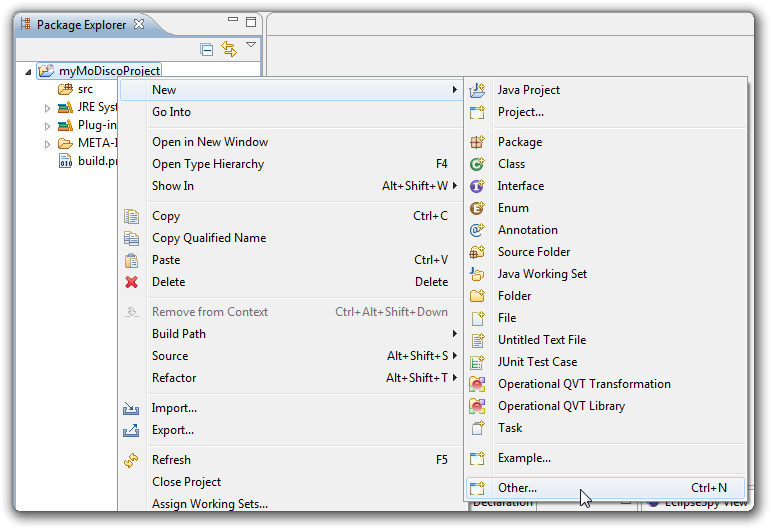
The MoDisco facet component introduces the concept of "facet". A facet is a kind of virtual class extension. Those "virtual classes" never have instances. An object can conform to a facet but can not be an instance of a facet.
For example, assuming we have a class named Employee and two facets: "Manager" and "Developer". We have a set of Employee instances and some of them have the facet of "Manager" or "Developer".
The goal of introducing the concept of facet is to be able to highlight some model elements as corresponding to a specific facet.
The MoDisco facet feature allows describing and using facet. The description is done by editing a model and the use is done through an API. The main client of this API is the MoDisco browser.
The first step is to create a MoDisco project.
The second step is to create a query set. This query set will store boolean queries indicating if an object conforms to a facet.
Right-click on the MoDisco project and select New > Other....

Select Facet Model and press the Next button
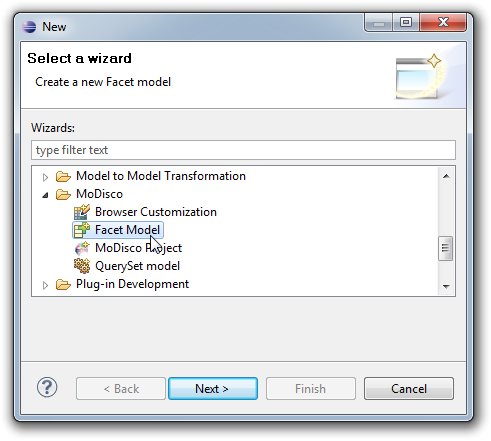
Choose a name for your model facet set (My.facetSet in the example) and press Finish.

Open the "My.facetSet" file and open the Properties View.
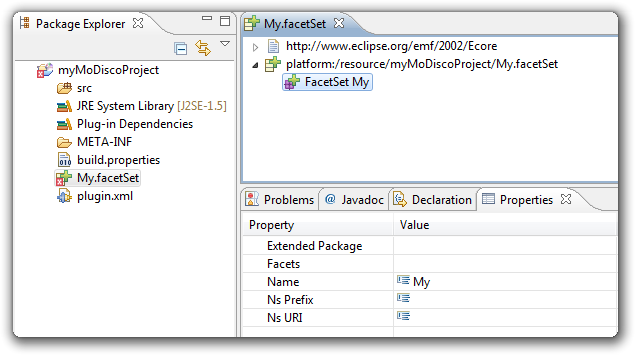
Set the name of the facet set and make sure that the facet set name is the same as the containing file name ("My" in the example). The nsURI and prefix must also be filled.
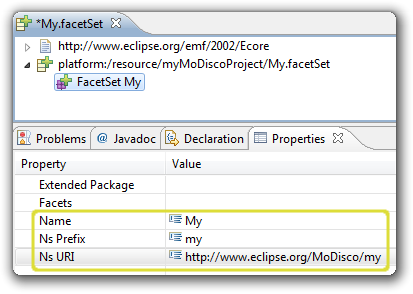
Load the resources containing the meta-model extended by the facet set. To load a meta-model resource you must use the Load Meta-model Resource action.
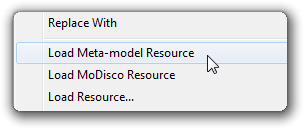
In this example, we choose to use the Java meta-model.

Fill the Extended Package field with the ePackage containing the virtually extended meta-model.
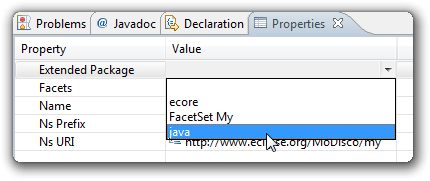
Right click on the FacetSet element and choose New Child > Facet to create a facet.

Set the facet name and the class that the facet will extend.
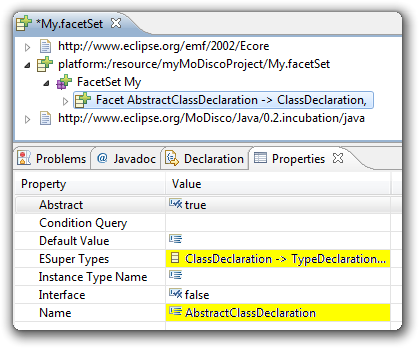
To specify how to know if an object conforms to a facet, we have to provide a boolean query. To provide this query we have to load the model containing its description.
Right-click in the editor and choose Load MoDisco Resource:
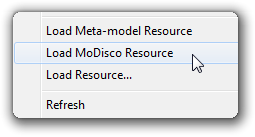
The query has to be referred to using the MoDisco protocol ("modisco:/query/<querySetName>"). In the example, we use the "My" query set.
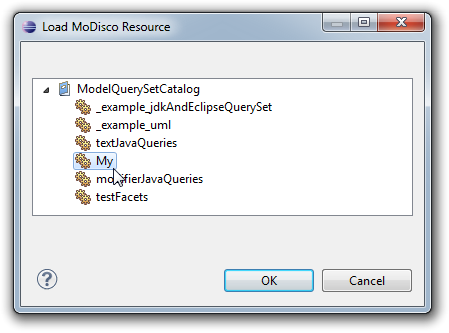
Once the query set resource is referenced, we just have to select the query describing the facet. In the example this query is named "isAbstract".

At this step, if we save the model, the error marker should disappear from the file's icon, indicating that the facet set model is now valid.
If the facet has specific attributes or references which can be calculated, we can declare them. In this example, we will declare an attribute indicating the number of abstract methods contained in the abstract class. To create a new facet attribute right-click on the facet element and select the New Child > FacetAttribute.

The attribute's type and name must be set. The "Value Query" field must be filled with a reference to a query which is used to calculate the attribute's value. This query must have the same type as the attribute and be applicable to the virtually extended class.
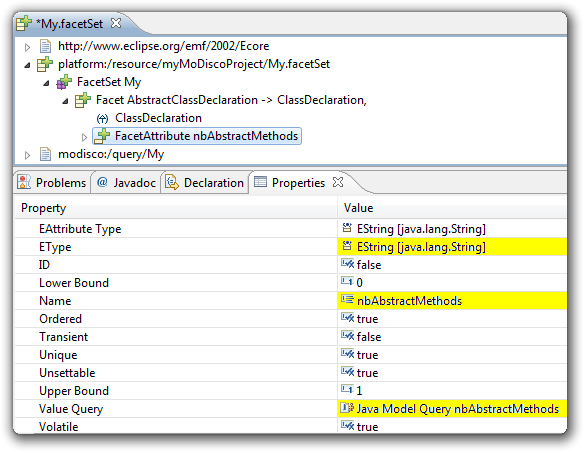
The facet set is now ready to be used.
If a facet set model is valid, it is registered in the facet set catalog. To consult the facet set catalog, we can use the "Facet Set" view.
To open this view select Windows > Show view > Other ... in the menu bar and choose Facet Sets in the list.
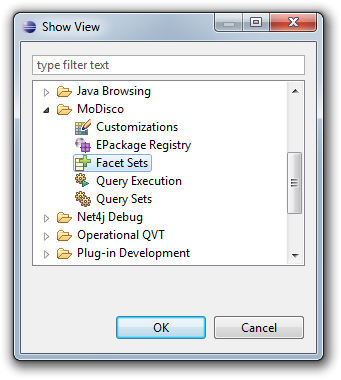
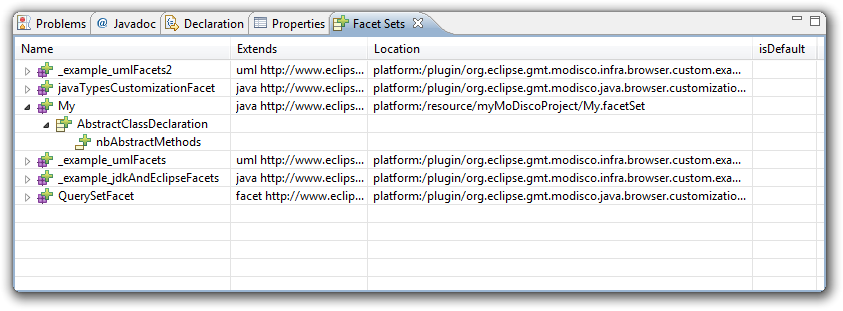
The "Facet Sets" view presents the available facet sets and their facets. For each facet set the location of its description model is pointed out.